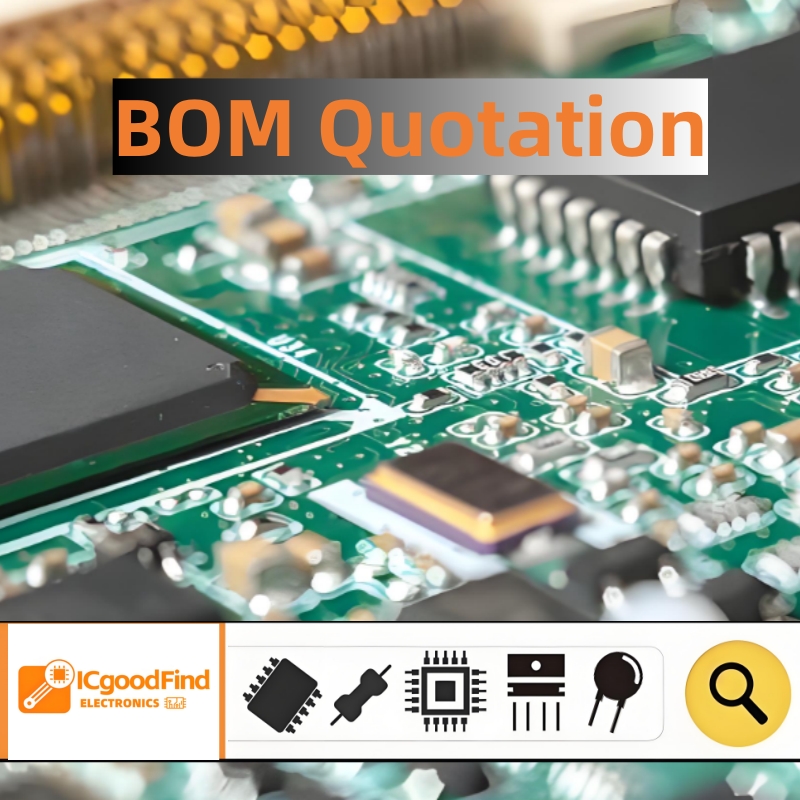**Unlocking High-Frequency Precision: A Comprehensive Guide to the AD9851BRS Direct Digital Synthesizer IC**
In the realm of electronic signal generation, precision, agility, and stability are paramount. The **AD9851BRS**, a member of Analog Devices' renowned Direct Digital Synthesizer (DDS) family, stands as a cornerstone technology for engineers and designers seeking to unlock high-frequency precision in applications ranging from communications to test and measurement. This integrated circuit (IC) represents a sophisticated blend of digital and analog processing, enabling the creation of near-perfect frequency-agile waveforms with unparalleled control.
**Understanding the Core: What is a DDS?**
At its heart, a Direct Digital Synthesizer is a technique for generating analog waveforms—most commonly sine waves—from a single, fixed-frequency reference clock. Unlike traditional phase-locked loop (PLL) based synthesizers, **DDS technology operates by digitally constructing the waveform**, offering superior frequency resolution and much faster switching speeds. The AD9851BRS excels in this domain, providing a complete, on-chip DDS solution.
**Architectural Brilliance of the AD9851BRS**
The power of the AD9851BRS lies in its integrated architecture. Its key components include:
* **A 32-Bit Phase Accumulator:** This is the heart of the DDS. It adds a **32-bit frequency tuning word (FTW)** to its current value with each clock cycle. This vast bit width is responsible for the IC's exceptional frequency resolution, allowing for incredibly fine adjustments to the output frequency.
* **A Sine Look-Up Table (LUT):** The phase accumulator's output, which represents a phase angle, is converted into a digital amplitude value for a sine wave using this internal ROM.
* **A High-Speed 10-Bit DAC:** The digital sine values are fed into a **built-in 10-bit digital-to-analog converter (DAC)**. This critical component transforms the digital numbers into a stepped analog signal.
* **A Analog Comparator:** A highly useful feature, this comparator converts the filtered DAC output into a sharp, stable square wave. This is invaluable for generating clock signals or for use in digital systems.
This high level of integration means that with just a **stable reference clock and minimal external components** (typically a low-pass filter and a decoupling capacitor), a designer can create a complete, programmable waveform generator.
**Key Performance Specifications and Capabilities**
The AD9851BRS is defined by its impressive specifications:
* **Up to 180 MHz Clock Rate:** This allows for the generation of output frequencies up to **70-80 MHz** (the Nyquist limit), covering a significant portion of the RF spectrum.
* **Exceptional Frequency Resolution:** The 32-bit accumulator provides a resolution of `(Clock Frequency) / 2^32`. With a 180 MHz clock, this equates to a remarkable **~0.042 Hz** resolution, enabling micro-Hertz-level tuning.
* **Rapid Phase and Frequency Switching:** The device can jump between frequencies or adjust phase **within a few clock cycles**, enabling sophisticated modulation schemes like FSK and PSK.
* **Serial or Parallel Programmable Interface:** It offers flexible control via a 5-wire serial or an 8-bit parallel interface, simplifying integration with microcontrollers and DSPs.

**Practical Applications: Where the AD9851BRS Shines**
The combination of agility and precision makes this IC indispensable in modern electronics:
* **Programmable Signal and Clock Generators:** Ideal for benchtop equipment and custom test fixtures.
* **Local Oscillators (LOs) in Communication Systems:** Used in up-conversion and down-conversion stages for its precise frequency control.
* **Modulation Techniques:** Easily implements **Frequency Shift Keying (FSK), Phase Shift Keying (PSK), and Chirp Modulation** for data transmission and radar systems.
* **Medical and Scientific Instrumentation:** Where clean, stable, and precisely timed signals are required.
**Design Considerations**
To achieve the performance promised by the datasheet, careful design is crucial:
* **Power Supply Decoupling:** Excellent decoupling with capacitors placed close to the power pins is **non-negotiable** to ensure a stable, noise-free supply.
* **Reference Clock Quality:** The purity and stability of the output signal are directly tied to the quality of the input reference clock. A clean, low-jitter clock source is recommended.
* **Reconstruction Low-Pass Filter (LPF):** The DAC's output is a staircase approximation of a sine wave. A well-designed **external reconstruction filter is essential** to remove high-frequency aliasing components and smooth the signal into a clean analog waveform.
**ICGOODFIND**
The AD9851BRS is a testament to the power of integrated mixed-signal design. It democratizes access to high-performance frequency synthesis, allowing engineers to replace complex analog circuitry with a single, digitally controlled IC. Its legacy continues in modern systems, and understanding its operation remains fundamental for anyone working in RF and signal processing design.
**Keywords:**
1. **Direct Digital Synthesizer (DDS)**
2. **Frequency Tuning Word (FTW)**
3. **Phase Accumulator**
4. **Waveform Generation**
5. **Frequency Agility**
